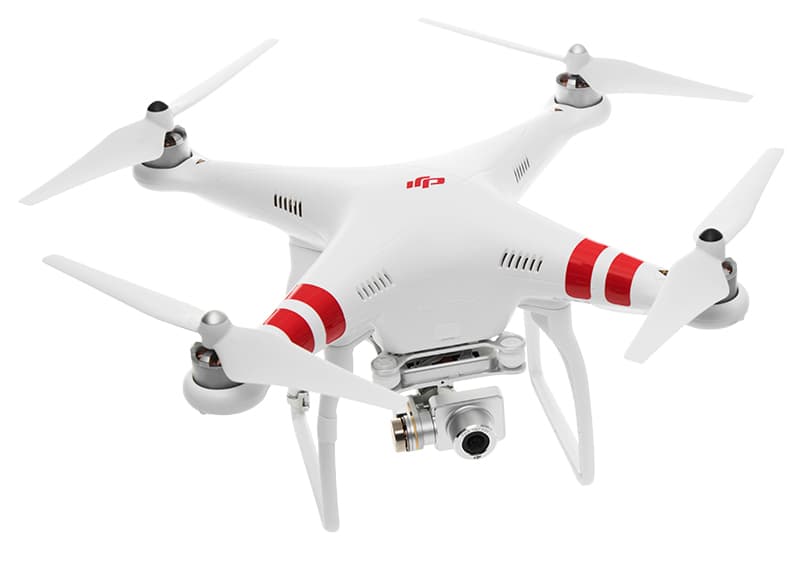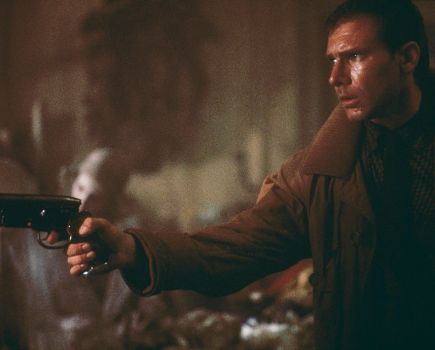A DJI Phantom drone crashed in a Fox News TV studio during an interview with a technology journalist.
The news comes as Chinese drone maker DJI declares its support for the micro-four-thirds standard, according to a statement issued by Olympus on 10 February.
As a timely guide for photographers about drone safety, AP publishes for the first time the full transcript of the magazine’s interview with Civil Aviation Authority (CAA) spokesman Tony Finnegan. The interview took place at AP’s central London offices last month.
AP: What are the key things enthusiasts should remember when flying a drone?
CAA: Firstly they need to make sure they are at least 50 metres away from people or buildings or anything they could come into contact with
Secondly, they need to make sure they always have line of sight of the drone when they are operating it.
And, thirdly, they need to keep away from congested areas. So avoid operating drones in towns and city centres. Things like that
AP: Why highlight the potential dangers of drones now?
CAA: It’s important we get across the message of the potential dangers of drones at the moment because we have seen a huge increase in interest in drones
We have heard from one UK retailer that they have sold around 10,000 units in the last year. So there has been a massive increase in both the sales and general interest in drones [affordability has made them more accessible]
But the really important thing to get across is that people need to use common sense. They need to follow the rules and operate drones safely, so they can prevent being a risk to any of the general public, buildings or anything like that
AP: When do you need permission?
CAA: The main thing you would need permission from the Civil Aviation Authority for is if you are doing what we call ‘aerial work’ – generally commercial purposes, but [this] can be things like news broadcasting. So, anything in a professional capacity or for a commercial reason you would need a permission from the CAA
We have 450 organisations that have that permission.
AP: How has this changed?
CAA: That [figure] has basically doubled in the last year. We are seeing around 50 emails a week coming in [from people] with general enquiries about when they could use drones, what the rules are etc. So, it is something that has massively increased, certainly in the last 12 months
AP: What are the common questions people ask?
CAA: The main things people generally ask us about are, ‘what are the basic rules?’ So, where can they fly drones and when would they need permission
AP: How do people go about getting permission?
CAA: You need to get in touch with the CAA and let the CAA know how you are looking to operate the drone, for what sort of purposes, and then the CAA can advise you from there about getting permission
For example, there’s a short course [for] making sure you are operating it safely and that the CAA is fully aware of the type of shots you are looking to do and the type of operation
AP: Where are the rules available for the public to view?
CAA: We have a dedicated area on the website at caa.co.uk. We also have a new info graphic which clearly explains what the rules are. That’s available at caa.co.uk/droneaware
That clearly sets out when you need permission, what sort of things you need to think about when you are operating a drone and, generally, the sort of common sense you need to apply to make sure you are using it safely
AP: There seems to be a grey area surrounding when a drone is under your control. If you go to a park with a few friends you don’t need permission if people are less than 50 metres away. But, if it’s a larger group of people, you don’t control then you would need permission
CAA: If you are using the drone in the park, just with a few friends, it’s an empty park and you are away from people, buildings, there’s not any risk [so] you wouldn’t need permission from the CAA
The thing you need to consider is, ‘Are there other people around you? Are there big groups of people? Are there any buildings you could come into contact with?’
All those things would make it difficult to fly the drone within the rules, so you really need to apply some common sense
If you are looking to fly it in a park have a good look around you. Look at the environment you are looking to operate it in. Is it safe? Is there any potential to come into contact with people or buildings? And if there is, think carefully about operating it because it may be better to use it elsewhere
AP: If you break the law, what can happen to you?
CAA: You could breach the Air Navigation Order. You could be prosecuted for that
We’ve had two prosecutions in the last year. People have been fined as a result of that. We also have the police who could take action
So they can make arrests for things like breach of the peace. They can also confiscate drones as part of their investigation…
So, it is important that people are following the rules and are operating drones safely
AP: What can the CAA do to stop people breaking the law, apart for giving advice?
CAA: The main thing the CAA is concerned with is safety. What we are trying to do, to prevent people breaching the rules, is [to] make sure people fully understand them
We are working with police forces so they are fully up to speed on what the rules are
AP: If someone commits an offence, realistically how can the culprit be identified?
CAA: Well, if people are operating a drone in a way that is unsafe and have breached the air navigation order… if we see evidence we can take action. Obviously retrospectively, it can be difficult to identify who was operating the drone, but we do have a team of very experienced investigators at the CAA and that is a big part of their job
The other thing to consider is the police can take action. So if they hear reports of someone operating a drone in an unsafe place they can arrest people on the ground and we have seen that happening. And the police are best placed to take that action if they see it happening
AP: Do you see a day when new laws will be brought in and when drones, or drone users, will need to be registered?
CAA: I don’t think we’d want to speculate on any potential changes to the regulations. At the moment we think they are proportionate to the risk but obviously we have seen a huge increase in the interest in drones in the last year, the technology has improved massively, prices have come down so it is something that is moving very, very quickly
I think the key thing for us and other authorities is to make sure we are monitoring the situation closely and that includes making sure the regulations are always fit for purpose
[brightcove videoID=4016951986001 playerID=940176129001 height=400 width=630]
Click on the above video for AP’s exclusive interview with the Civil Aviation Authority
 For the rules on drone use, published by the CAA, click HERE
For the rules on drone use, published by the CAA, click HERE







